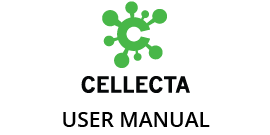Guidelines for using AIR Control Isoform Pools
For the Spike-In Control Isoform Pools, typically, 2 µl of each isoform-specific control should be added to each experimental sample. This recommended volume will generate approximately 1,000 detected spike-in cDNA molecules for each of the 3 spike-in constructs, providing a high sensitivity level for detecting potential cross-contamination levels between different samples.
Directly spike in an aliquot of Spike-In Control Isoform Pools to the RNA sample before performing any processing step using AIR-RNA or similar AIR-seq assays. We recommend using a positive control RNA sample in every experiment to help troubleshoot, analyze data, and normalize across different sample runs. To achieve high reproducibility, avoid adding volumes of less than 1 µl and dilute Spike-In Controls with the dilution buffer provided in the kit.
Use cases for AIR Control Isoform Pools
1. Assess cross-contamination: Cross-contamination between different samples is a serious problem for any PCR-based technology. Bench-level cross-contamination due to sample mixing, contamination by PCR products from previous experiments, or barcode jumping during sequencing are the most common reasons that could significantly affect AIR experimental results. Cellecta’s Spike-In Control Isoform Pools provide the best strategy for measuring cross-contamination levels between different samples. There are 13 different TCR isoforms or 16 different BCR isoforms with three CDR3-specific constructs for each isoform available to spike-in different experimental samples. The level of cross-contamination could be easily measured by comparing control-specific spike-in cDNA molecules for different samples. You can measure the contamination by any two PCR products generated by previous experiments by detecting common/shared clonotypes in all experimental samples, as illustrated in Figure 5.
 Fig 5: Detection of cross-contamination level between different experimental samples in AIR-RNA assay. Individual TCR/BCR triplex isoform control pools (2 µl each) of T1-T13 and B1-B16 were spiked in each of different whole blood RNA samples (50 ng each), and control PBMC RNA (C). AIR-RNA assay for each experimental RNA sample was performed in separate test tubes and spike-in control cDNA molecule numbers for each spike-in control construct were calculated by MiXCR. Most samples show zero or limited crossover and only detect the respective spiked-in control set allowing us to measure cross contamination or crossover between multiple samples.
Fig 5: Detection of cross-contamination level between different experimental samples in AIR-RNA assay. Individual TCR/BCR triplex isoform control pools (2 µl each) of T1-T13 and B1-B16 were spiked in each of different whole blood RNA samples (50 ng each), and control PBMC RNA (C). AIR-RNA assay for each experimental RNA sample was performed in separate test tubes and spike-in control cDNA molecule numbers for each spike-in control construct were calculated by MiXCR. Most samples show zero or limited crossover and only detect the respective spiked-in control set allowing us to measure cross contamination or crossover between multiple samples.
Need more help with this?
Contact Us


